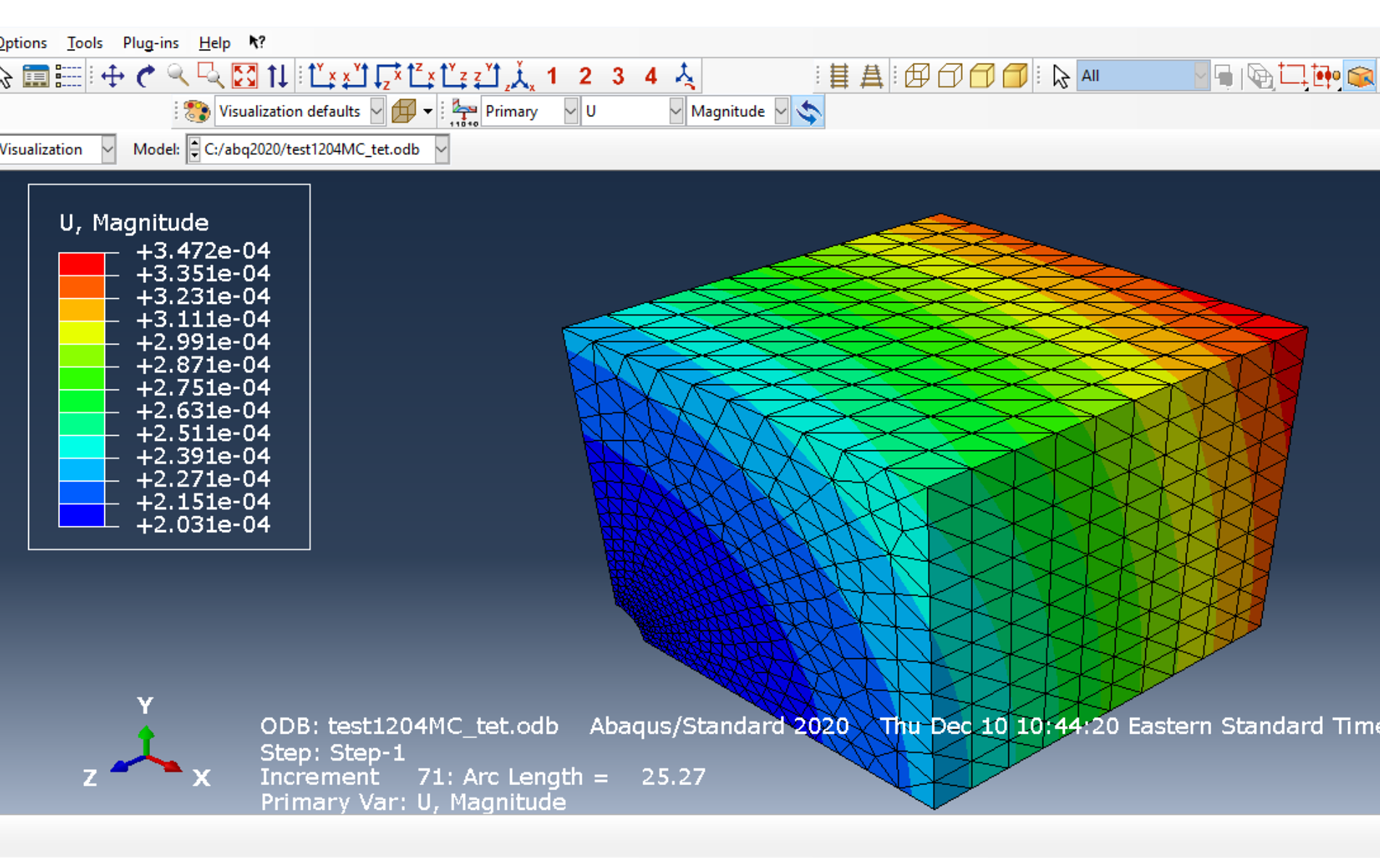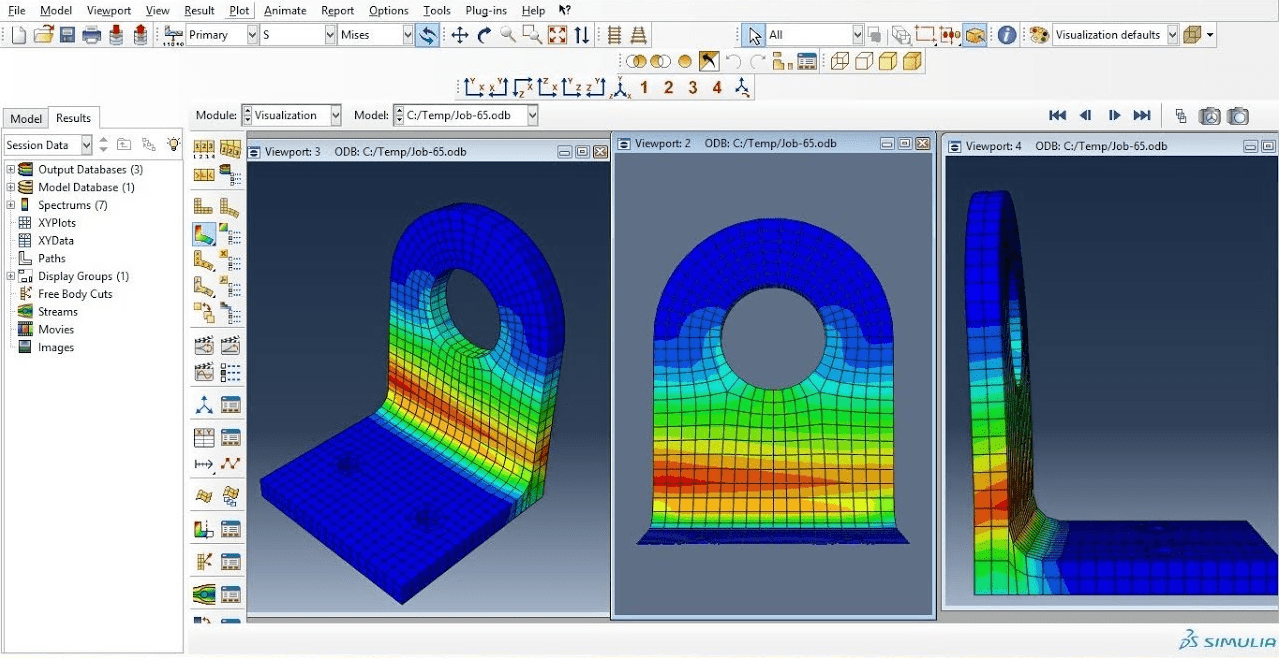

The benefit is much higher when GPUs are used instead of additional CPUs. The staircase pattern shows wider steps with increasing cores for both curves, highlighting the fact that it is cost-effective when more CPU cores are used. Adding 1 or 2 GPUs to 16 CPU cores increases the CPU core count to 17 or 18 respectively, but the number of tokens would remain at 16, as shown by the pair of red dots. The second dotted line shown at the 16-core mark on the primary X-axis indicates that for 16 CPU cores, 16 tokens are required.This Python script is released with the paper: Qingbin Liu, Jiang Li. If a GPU is included in the simulation run, the CPU core count is 9 but the number of tokens remains at 12, as shown by the single red dot. Python script converts Abaqus ODB files to VTK format for Paraview visualisation. when I can open it with Abaqus If You want to know more about the parasolid CAD format. The first dotted line shown at the 8-core mark on the primary X-axis indicates that for 8 CPU cores, 12 tokens are required. ParaView is an open-source, multi-platform data analysis and.


The cost benefit of using GPUs for simulations is illustrated by the two sets of computing configurations indicated by the dotted lines This way of counting a GPU is represented by the green staircase-patterned curve with the corresponding CPU+GPU core count in the secondary X-axis on the top. the VTU format results and visualize them in the software Paraview 39. When a GPU is included in the simulation, it is counted as a single CPU core for the purposes of calculating the number of required tokens. The details on the main procedures to interact with Abaqus, defining the UEL. The staircase pattern in these curves shows how the increase in the required number of tokens decays as the number of CPU cores increases. ParaView plugin Install meshio for the Python major version that ParaView uses (check pvpython -version ) Open ParaView Find the file paraview-meshio-plugin. Models from microtomography have extremely complicated structures, and datasets of Abaqus output are huge, requiring a.

However, the visualization capability of Abaqus using its CAE module is limited. It delivers linear and nonlinear analyses of mechanical and fluid dynamics, includes multi-body system and multi-physics coupling. We share the script with Abaqus users on GitHub.The blue curve represents the CPU-only case, while the green curve represents the CPU and GPU case. Abaqus is a popular software suite for finite element analysis. Given its good readability and extendibility, the script can be extended to the processing of more different problems in Abaqus. The data partition scheme minimizes data redundancy and works efficiently. To support full parallel visualization, the Python script achieves data partitioning by reorganizing all nodes, elements and the corresponding results on those nodes and elements. ParaView's parallel visualization makes it possible to visualize very big data. Such capabilities as volume rendering, tensor glyphs, superior animation and other filters allow ParaView to offer excellent visualizing manifestations. Odb2vtk is a Python script that converts Abaqus output ODB files to VTK format. In this work, a user-defined element (UEL) for dynamic analysis based on the PSBFEM is developed in the general finite element software ABAQUS. We convert Abaqus output into the XML-based VTK format by developing a Python script and then using ParaView to visualize the results. The polygonal scaled boundary finite element method (PSBFEM) is a novel approach integrating the standard scaled boundary finite element method and the polygonal mesh technique. Models from microtomography have extremely complicated structures, and datasets of Abaqus output are huge, requiring a visualization tool more powerful than Abaqus/CAE. Changing and viewing properties on filters is the same as with any other pipeline module, including readers and sources. Abaqus® is a popular software suite for finite element analysis. Filters provide properties that you can change to control the processing algorithm employed by the filter.


 0 kommentar(er)
0 kommentar(er)
